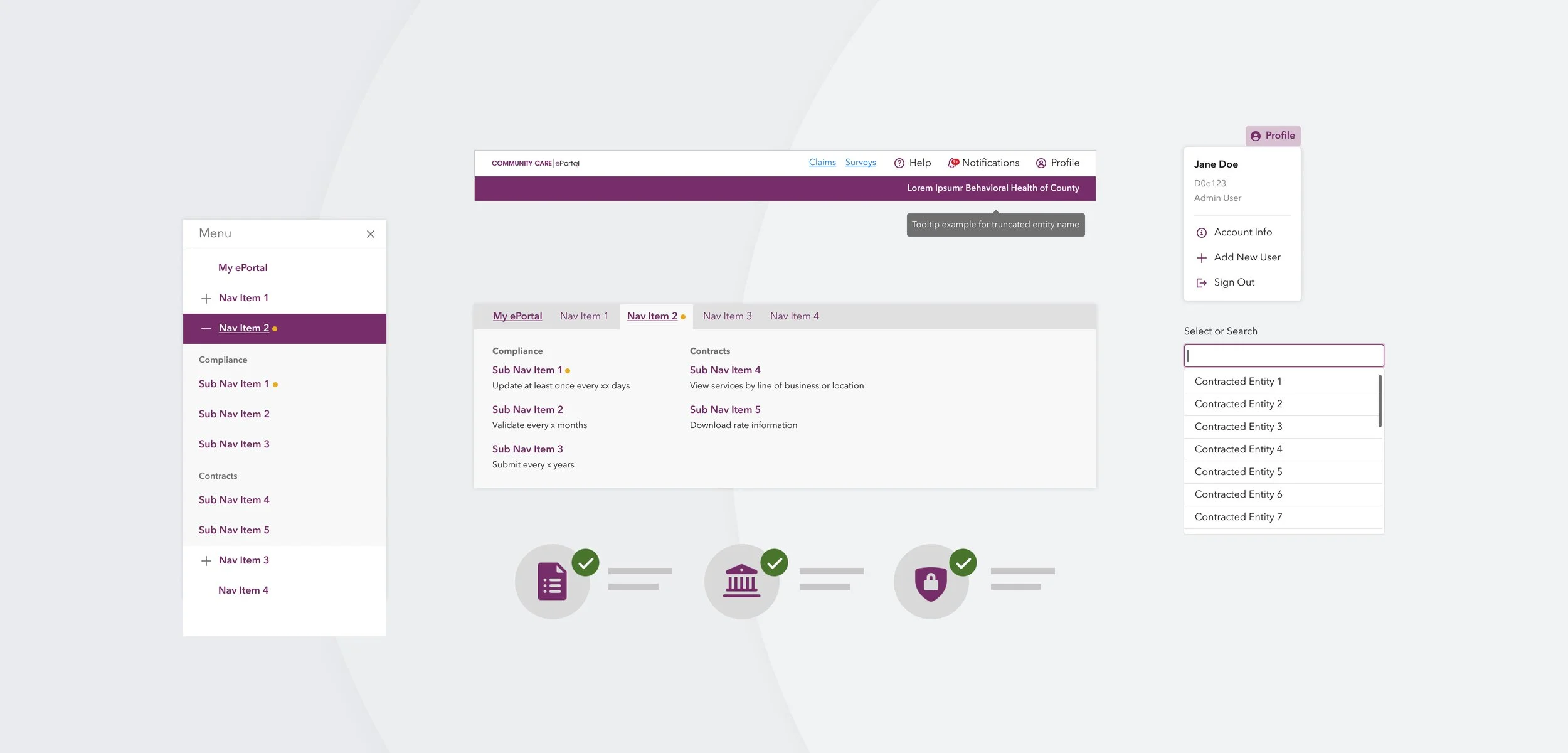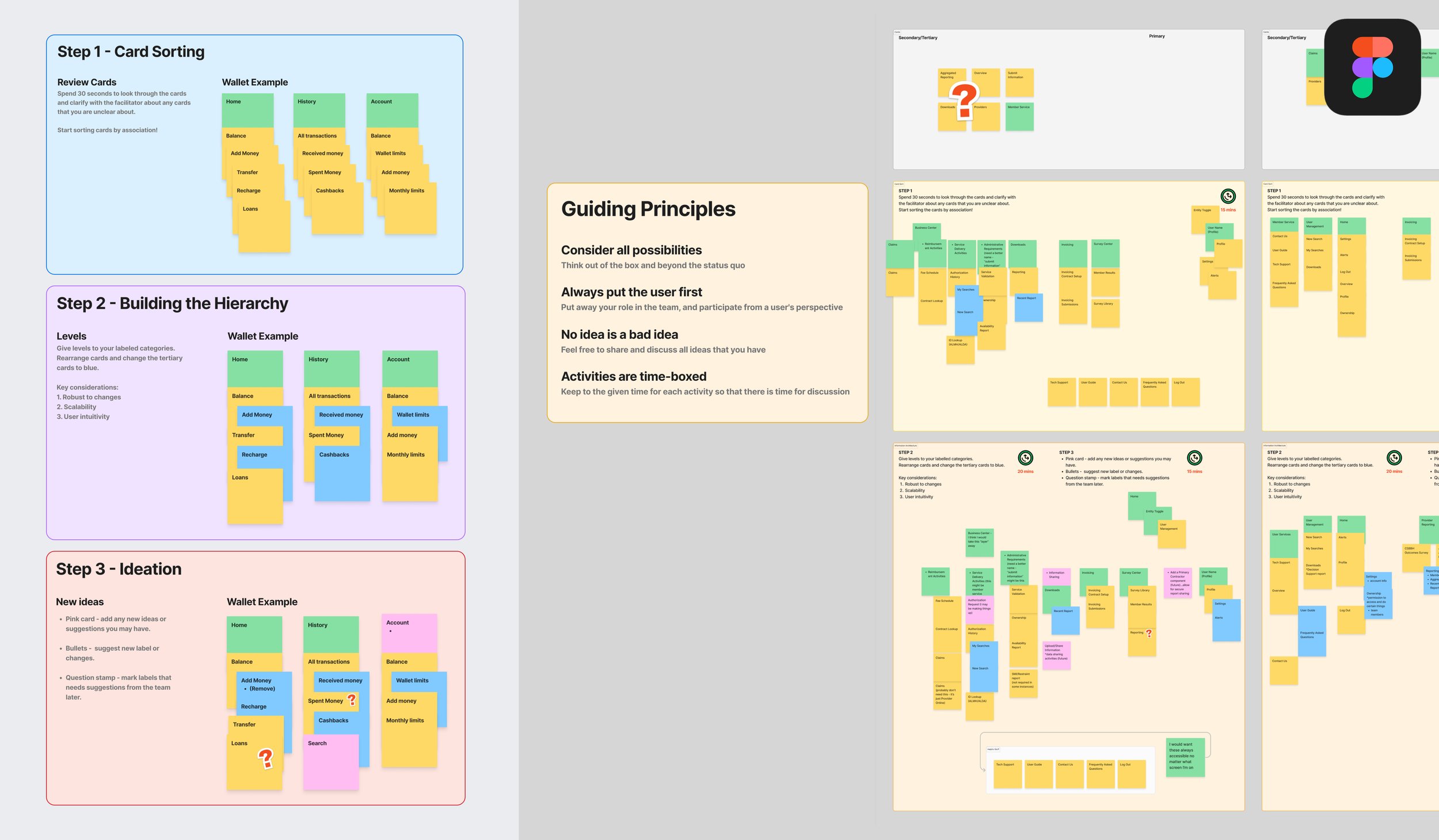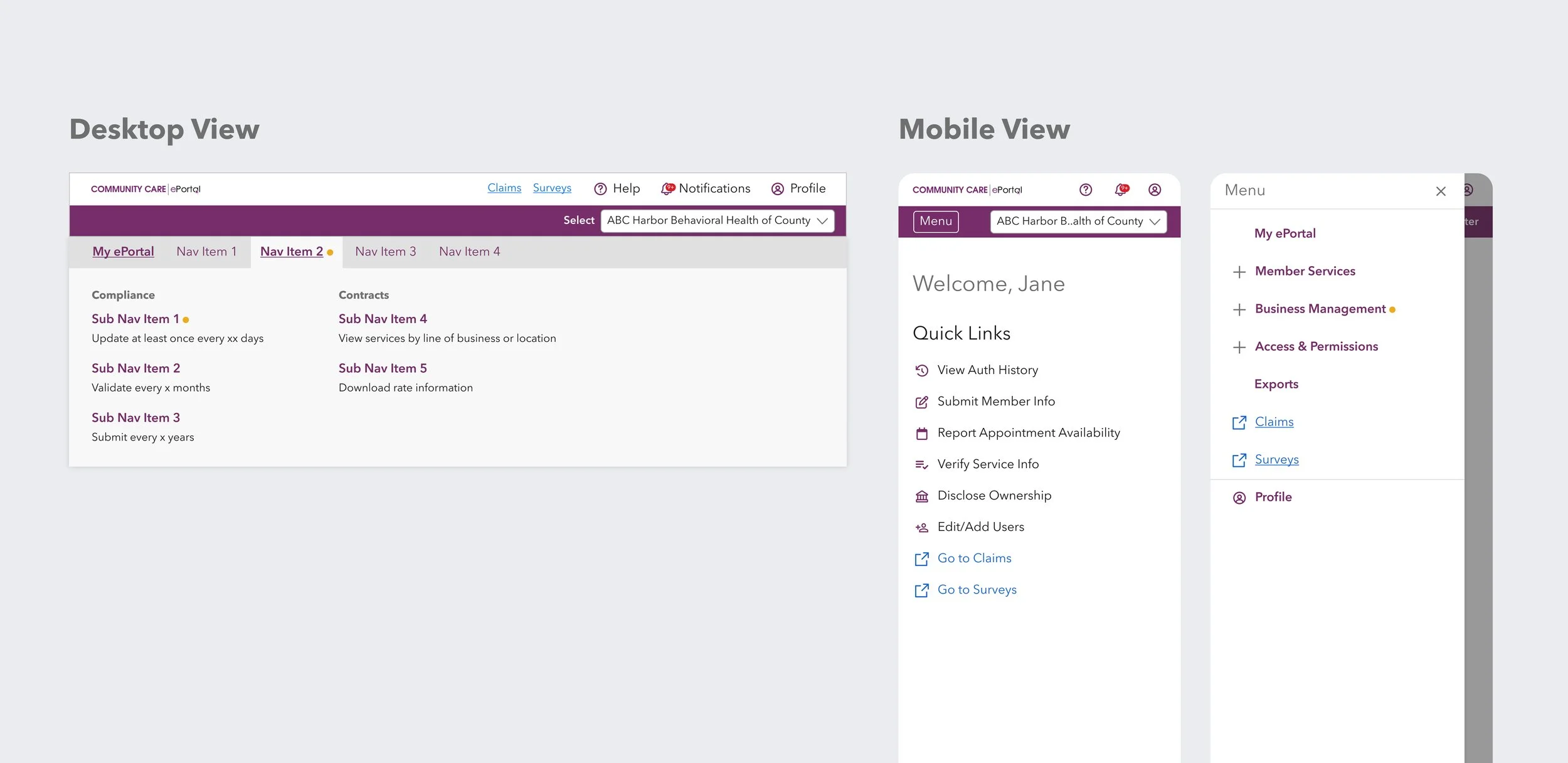Healthcare Portal Redesign
⌛ ~3 min read
Project Info
Role: Lead UX Designer
Timeline: 1 year
Launched: In development. Launching in Q4 2025
Impact
Published a new version of the design system with new components and interaction specs.
90.4%(version A) and 84.6%(version B) task completion rates in A/B testing.
Expected to reduce 27% of support tickets currently related to navigation and permissions confusion.
The Challenge
The Burnout is Real
Healthcare providers are drowning in paperwork, and it's not just frustrating—it's leading to serious burnout and delays in care.
The platform I work on serves over 1,200 behavioral health providers handling prior authorizations, compliance reporting, and regulatory submissions. Our goal is simple: automate admin tasks and say goodbye to faxing and email threads. But digitalizing processes isn’t enough.
This platform had grown over a decade with powerful new features, but the navigation was stuck in the past. Users were sifting through navigation tabs, and compliance deadlines were sometimes missed.
Over a year, I led foundational interviews, A/B testing, and cross-departmental workshops to modernize the homepage and navigation, creating an intuitive experience that respects the routine workflows that providers depend on.
Evolution or Revolution
Early stakeholder workshops revealed the constraints I'd be working with. The redesign required balancing user needs with technical constraints while ensuring the solution maintained the security and compliance standards critical to healthcare operations. This means I could restructure the navigation as long as the backend and existing data flows remain untouched.
Company's privacy and confidentiality policy meant no fancy research analysis tools—interviews had to be manually anonymized and coded with consent protocols for every session. All these are common challenges for UX designer and researchers working in healthcare. The challenge is never about adopting the latest technology, it’s about treating constraints as an opportunity to get creative.
My Process
Juggling Dual Mental Models
Foundational interviews with 6 providers hit on the core issue fast: users don't see isolated features—they see workflows tied to their specific roles. Our navigation was organized around how our company worked, forcing providers to think like us instead of following their clinical workflows.
Cross-departmental workshops with 6 stakeholders showed me how differently internal teams and providers approached the same features. These insights were translated into navigation structures, and validated using realistic scenarios with 101 providers. The result is a navigation structure with inclusive labels at the top level with terms that are familiar to both groups before drilling into role-specific sub-navigation.
Overcome Decision Paralysis
The best design solutions are “invisible,” working seamlessly for users regardless of their tech comfort or product familiarity. I conducted A/B testings with two navigation patterns to make sure our solution meets this design goal.
The testing result was a “tie”—both approaches had solid task completion rates (90.4% top nav vs 84.6% side bar), but users split exactly 50/50 on preference. Providers with basic tech skills gravitated toward top navigation, while admitting the side bar is less visually cluttered. So how did I choose?
Top mega navigation worked because it offered more space for onboarding and guidance through feature descriptions and clear category labels. The top-down structure acts as a signpost, showing users where they are and enabling faster switching between workflows and facilities.
Homepage quick links replaced redundant navigation cards with shortcuts based on two years of usage data. I kept them fixed instead of customizable for the first release. Even though all 7 A/B testing participants quickly adopted these shortcuts, customization felt like a "nice to have" rather than essential.
Compliance got priority because it directly impacts patient care. Beyond callouts in the mega navigation, I added a notification dropdown for timely reminders. A comprehensive notification system can wait for the next release—tackle critical pain points one at a time.
A versatile but consistent structure lets different user types share the same portal effectively. To minimize dev effort and reduce learning curve, I reused existing components and patterns while adding targeted role-specific features only where absolutely necessary (e.g., emulation function).
What I Learned
Policy and organizational constraints improved research insights. Manual data analysis was time-consuming, but forced me to engage intimately with every piece of data. I’ve noticed subtle patterns, contradictions, and emotional undertones that AI might miss or oversimplify.
Users just want to be included. Healthcare providers are a tough crowd to work with, but it’s also deeply rewarding. One provider told me, "Thank you for including us in these discussions. We're not only in the system but utilizing it." It might be difficult scheduling ten minutes in their day, but most are happy to be a part of the solution.
Technical debt can create opportunities. Component upgrades delayed everything but let us build a proper design system and component library alongside the redesign. Sometimes setbacks set you up better for the future.
No room for “we’ll fix it next sprint”. Healthcare isn't like other industries where you can ship something 80% done and iterate. Providers need things to work properly from the start—because patient care is on the line.
Where We're at Now
The redesign development is currently in progress. We'll know it's working when support tickets drop, tasks get completed faster, and fewer compliance deadlines get missed.
Meanwhile, the design system we built is already being used by other features, creating a consistent experience across the platform.
The real test? Whether providers finally feel like the portal works with them instead of against them.







